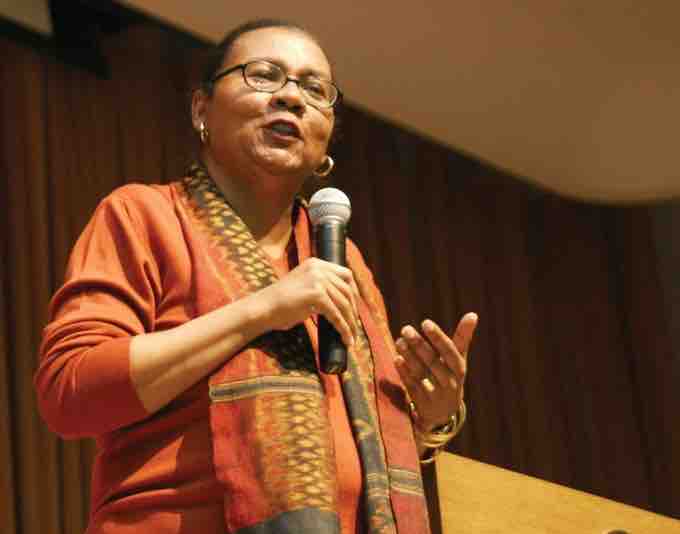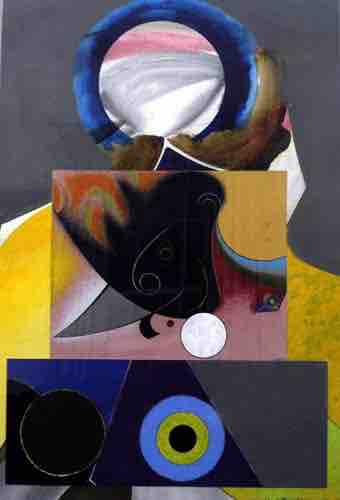Background
Postmodernism (also known as post-structuralism) is skeptical of explanations that claim to be valid for all groups - cultures, traditions, or races - and instead focuses on the relative truths of each person (i.e. postmodernism = relativism). In the postmodern understanding, interpretation is everything; reality only comes into being through our interpretations of what the world means to us individually. Postmodernism relies on concrete experience over abstract principles, arguing that the outcome of one's own experience will necessarily be fallible and relative, rather than certain or universal.
Postmodernism frequently serves as an ambiguous overarching term for skeptical interpretations of culture, literature, art, philosophy, economics, architecture, fiction, and literary criticism. It is often associated with deconstruction and post-structuralism because its usage as a term gained significant popularity at the same time as twentieth-century post-structural thought.
Postmodernism postulates that many, if not all, apparent realities are only social constructs and are therefore subject to change. It claims that there is no absolute truth and that the way people perceive the world is subjective and emphasizes the role of language, power relations, and motivations in the formation of ideas and beliefs. In particular it attacks the use of sharp binary classifications such as male versus female, straight versus gay, white versus black, and imperial versus colonial; it holds realities to be plural and relative, and to be dependent on who the interested parties are and the nature of these interests. Postmodernist approaches therefore often consider the ways in which social dynamics, such as power and hierarchy, affect human conceptualizations of the world to have important effects on the way knowledge is constructed and used. Postmodernist thought often emphasizes constructivism, idealism, pluralism, relativism, and scepticism in its approaches to knowledge and understanding.
Postmodernism and race
Postmodernism had a profound influence on the concepts of race and ethnicity in the United States in the mid-20th century. Many people began to re-conceptualize the term "race" as a social construct - meaning that it has no inherent biological reality, but is a classification system that's been constructed or invented for societal purposes. following the Second World War, evolutionary and social scientists were acutely aware of how beliefs about race had been used to justify discrimination, apartheid, slavery, and genocide. This questioning gained momentum in the 1960s during the U.S. civil rights movement and the emergence of numerous anti-colonial movements worldwide.
A great deal of art during this era sought to deconstruct race through a postmodern lens. The author bell hooks is widely known for her writing focused on the connection of race, capitalism, and gender and what she describes as their ability to produce and perpetuate systems of oppression and class domination. She has published over thirty books and numerous scholarly and mainstream articles, appeared in several documentary films and participated in various public lectures. Primarily through a postmodern perspective, hooks has addressed race, class, and gender in education, art, history, sexuality, mass media and feminism.

bell hooks
The author bell hooks is widely known for her postmodern writing focused on the connection of race, capitalism, and gender.
Some African-American artists began taking a global approach after World War II. Artists such as Barbara Chase-Riboud, Edward Clark, Harvey Cropper and Beauford Delaney worked and exhibited abroad in Paris, Copenhagen and Stockholm. Other African-American artists made it into important New York galleries by the 1950s and 1960s: Horace Pippin and Romare Bearden were among the few who were successfully received in a gallery setting. The Civil Rights Movement of the 1960s and 1970s led artists to capture and express the times and changes. Galleries and community art centers were developed for the purpose of displaying African-American art, and collegiate teaching positions were created by and for African-American artists .

E.J. Martin 1990
Midnight Golfer by Eugene J. Martin, mixed media collage on rag paper.
Post-black art arose during this time as a category of contemporary African-American art. It is a paradoxical genre of art where race and racism are intertwined in a way that rejects their interaction. By the 1980s and 1990s, hip-hop graffiti became predominate in urban communities. Most major cities had developed museums devoted to African American artists. The National Endowment for the Arts provided increasing support for these artists.